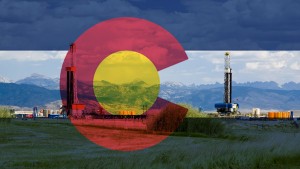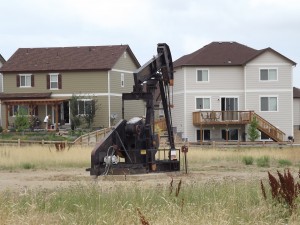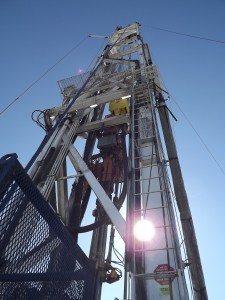Yesterday, Governor Hickenlooper’s hand-picked Task Force regarding State and Local Regulation of Oil and Gas Operations met for the first time. The 21 members are people within the Colorado community who represent oil and gas companies, environmental groups, the farming and homebuilding communities, civic leaders, attorneys and government leaders.
 The task force was created to smooth out the bumps in the road traveled by local communities, citizens, homeowners and oil and gas operators working alongside one another in the shale revolution. The goal of the task force is to come up with recommendations that will support the state’s jurisdiction to regulate the oil and gas industry and create recommendations that also address the concerns of local communities about drilling and hydraulic fracturing and other energy development activities happening within their jurisdictions.
The task force was created to smooth out the bumps in the road traveled by local communities, citizens, homeowners and oil and gas operators working alongside one another in the shale revolution. The goal of the task force is to come up with recommendations that will support the state’s jurisdiction to regulate the oil and gas industry and create recommendations that also address the concerns of local communities about drilling and hydraulic fracturing and other energy development activities happening within their jurisdictions.
The task force was a compromise between Gov. Hickenlooper and several signature gathering groups that had crafted constitutional amendments and other ballot measures that would have virtually stopped Colorado’s oil and gas development in its tracks, according to the governor. The proposed oil and gas local control and related measures heading for the November state ballot were tossed in favor of letting Colorado citizens hammer out solutions that will work for all parties.
“At their first meeting Thursday, panel members agreed that before moving forward, they need more information and must clearly define the problem,” according to the Denver Post. “If we can’t agree on what the problems are, it will really be difficult to come to solutions,” said panel member Bruce Rau, chairman of the Colorado Association of Home Builders, the Post report said.
“(The issue is) horizontal drilling and lots of wells going in near people,” said Jeff Robbins, a Western Slope attorney on the panel, according to the Post report.
Bingo: Problem Identified
 For decades the only neighbors watching nearby oil and gas operations were jackrabbits, coyotes, birds and the scattered farm families collecting royalty payments from the oil being pumped from beneath their lands into the storage tanks on their property. In the West, oil and gas exploration and production is mostly located in the middle of nowhere.
For decades the only neighbors watching nearby oil and gas operations were jackrabbits, coyotes, birds and the scattered farm families collecting royalty payments from the oil being pumped from beneath their lands into the storage tanks on their property. In the West, oil and gas exploration and production is mostly located in the middle of nowhere.
But starting about 10 years ago, shale deposits are suddenly economically viable hydrocarbon reservoirs (because of the advent of horizontal drilling combined with hydraulic fracturing). The Niobrara shale lies under northern Colorado. Companies flocked back to the Wattenberg field in northeastern Colorado near Greeley and the boom was on. Problem is that much of the surface of the leased acreage is now populated by brand new neighborhoods, schools, expanding towns and kids’ soccer teams.
Average Citizen Not Sure How Drilling and Fracing Work, but Fear the Effects
The average citizen homeowner with a brand new home in a brand new neighborhood in Weld County happily moves in and doesn’t know that the land next to the new neighborhood may very well be a leasehold for an oil and gas company. State laws prohibit the interference with a mineral owner’s right to access the minerals so plans are made to drill. Colorado law requires notification of drilling activity to building owners and mineral owners, but not to tenants or families whose kids attend a school near a drilling site. So when trucks show up, and rigs go up and casing is delivered and heavy equipment rolls in and out, and water trucks, drilling mud, sand trucks and a myriad of other industrial functions “suddenly” start up 24/7 on the land next door, the people living next door are going to get nervous.
An energy issues enrichment class at the University of Denver with a class membership similar to that of the task force was asked: “How long do you think fracing takes when they do it at a well site?”
One class member raised her hand and answered, “two years?”
The instructor quickly set the record straight with a range of one or two days up to a few days at a multi-well pad. The idea that multistage fracs on a multi-well pad can be done and the equipment gone in a week or 10 days was a surprise to many people.
 Toughest Oil & Gas Rules in the Nation
Toughest Oil & Gas Rules in the Nation
The instructor went through 60 slides out of a 200 slide deck detailing the key points within the regulatory process for anyone seeking a permit to drill an oil or gas well on private land in Colorado. The 2013 stringent setback rules, the new methane emissions rules, Dept. of Health regulations on flaring, noise limits, closed-loop drilling, green completions, traffic plans, buffer zones, well integrity, wildlife restrictions, sensitive areas, proximity to public water supply, new chemical spill rules as of Feb. 1, 2014, House Bill 134-1356 (June 2014) which significantly increased the penalties for violations at oil and gas sites to as high as $15,000 per day to the operating company.
Someone in the class asked if there had been any big spills or operator violations during all the Colorado shale drilling in the past few years. No one could recall any. Finally someone asked, “so what’s the problem?”
10 to 1 Pro-Industry
Karen Crummy writing about the first task force meeting for Colorado Peak Politics said, “the testimony was overwhelmingly supportive of the oil and gas industry – by some estimates as much as ten-to-one. We recall hearing two, maybe three, pro-initiative folks testify. What was more interesting was that the anti-regulation folks weren’t just a bunch of older gentlemen employed by the oil and gas industry. People came from all walks of life to support a major underpinning of Colorado’s economy… 42 of 49 public comments supported current regs.”
[sam_ad id=”32″ codes=”true”]
Important disclosures: The information provided herein is believed to be reliable; however, EnerCom, Inc. makes no representation or warranty as to its completeness or accuracy. EnerCom’s conclusions are based upon information gathered from sources deemed to be reliable. This note is not intended as an offer or solicitation for the purchase or sale of any security or financial instrument of any company mentioned in this note. This note was prepared for general circulation and does not provide investment recommendations specific to individual investors. All readers of the note must make their own investment decisions based upon their specific investment objectives and financial situation utilizing their own financial advisors as they deem necessary. Investors should consider a company’s entire financial and operational structure in making any investment decisions. Past performance of any company discussed in this note should not be taken as an indication or guarantee of future results. EnerCom is a multi-disciplined management consulting services firm that regularly intends to seek business, or currently may be undertaking business, with companies covered on Oil & Gas 360®, and thereby seeks to receive compensation from these companies for its services. In addition, EnerCom, or its principals or employees, may have an economic interest in any of these companies. As a result, readers of EnerCom’s Oil & Gas 360® should be aware that the firm may have a conflict of interest that could affect the objectivity of this note. The company or companies covered in this note did not review the note prior to publication. EnerCom, or its principals or employees, may have an economic interest in any of the companies covered in this report or on Oil & Gas 360®. As a result, readers of EnerCom’s reports or Oil & Gas 360® should be aware that the firm may have a conflict of interest that could affect the objectivity of this report.

